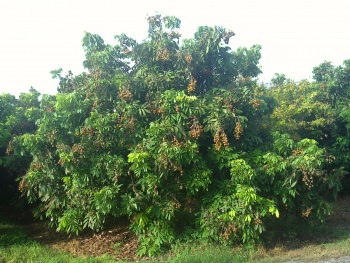Longan
From Wikiwel
Dimocarpus longan, commonly known as the longan, is a tropical tree that produces edible fruit. It is one of the better-known tropical members of the soapberry family, to which the lychee also belongs. It is native to Southern China.
See also : Long Yan Rou
Special Precautions of Longan
Benefits and uses of Longan are
- Longan Root 龍眼根: for Chyluria , leucorrhea, rheumatoid arthritis.
- Longan Leaves 龍眼葉: prevents epidemic influenza, epidemic meningitis, influenza, enteritis, eczema of the scrotum.
- Long Yan Rou 龍眼肉 (edible part of the fruit): as tonic after illnesses, neurasthenia, forgetfulness, palpitation, insomnia.
- Longan Seeds 龍眼種子: stomachache, scalding, bleeding from cut.
- Longan is used as remedy for stomach ache, insomnia, amnesia, and dropsy.
- The fruit is said to invigorate the heart and spleen, nourish the blood and have a calming effect on the nervous system.
- A spoonful of longan tonic made of equal quantities of longan flesh and sugar simmered in water till it is reduced to a syrup consistency is recommended twice a day.
- A decoction of the dried flesh is taken as a tonic and treatment for insomnia and neurasthenic neurosis.
- In Vietnam, the "eye" of the longan seed is pressed against snakebite in the belief that it will absorb the venom.
- The seeds are administered to counteract heavy sweating, the pulverized kernel, which contains saponin, tannin and fat, serves as a styptic (substance that draws together or constricts body tissues and is effective in stopping the flow of blood or other secretions).
